Welcome to Make a Gooey Thing! In which I walk you through these weird substances I regularly make in my work with kids. Last time, we made Oobleck. Today, we’re making gluten-free playdough.
A lot of people think of playdough as the mushy stuff that comes in little plastic cans, that you can sculpt and smush and squish through plastic creatures to make hair. This is all true, but you can save yourself some money and some plastic cans, because it’s also super easy and cheap just to make it on your own. I learned to make playdough when I worked in a nursery school a few years ago. This year I’m working with kids who are gluten-free, so I hunted down and adapted this recipe from Celiac Family.
The #1 ingredient in playdough is typically flour, which can make it impossible for gluten-free kids to use. This recipe worked really well and was indiscernible from your typical gluten-full kitchen playdough. We had a grand time.
Ingredients
(I doubled the Celiac Family recipe so we’d have more.)
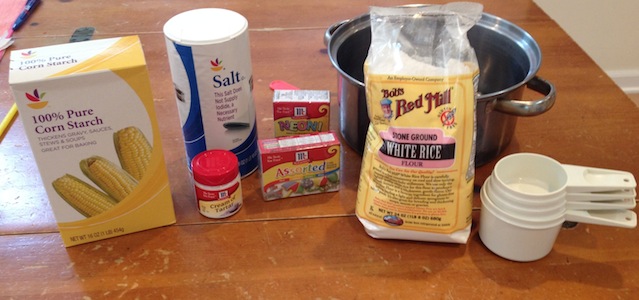
- 2 cups rice flour
- 1 cup cornstarch
- 1 cup salt
- 2 Tbsp cream of tartar
- 1 tsp vegetable oil
- 2 cups water (hot, not boiling)
- food coloring (I bought the standard primary colors and also special neon colors)
How It’s Made
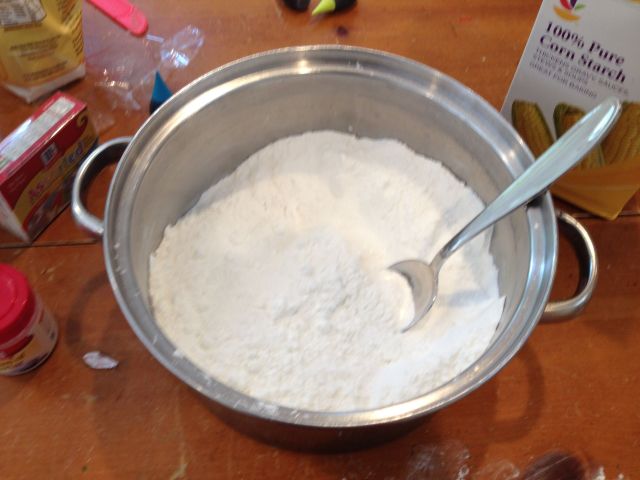
First, mix all the dry ingredients together in a pot.
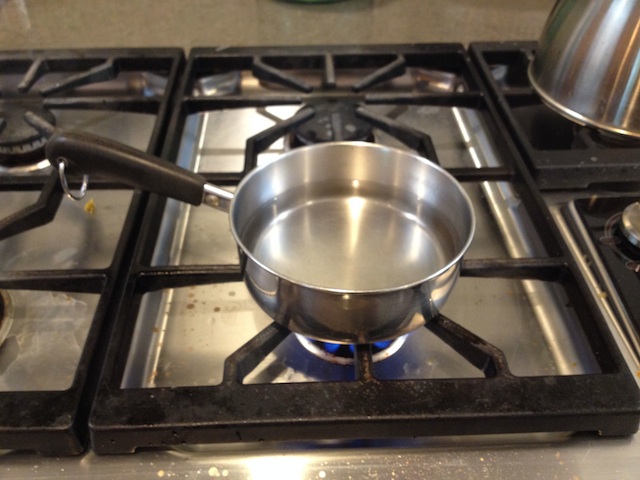
Heat the water until it’s hot, but nowhere near boiling — you’re going to have to dig your hands into it, so keep it cool enough so you can do that safely.
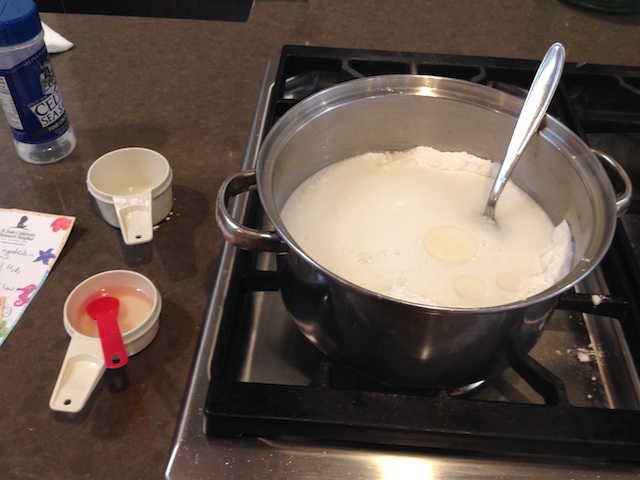
Add the water and oil to the dry ingredients, and stir it around, keeping it on the stove over medium-low heat until it is a doughy consistency. Turn the heat off and take the pot off the stove, and knead it some more.
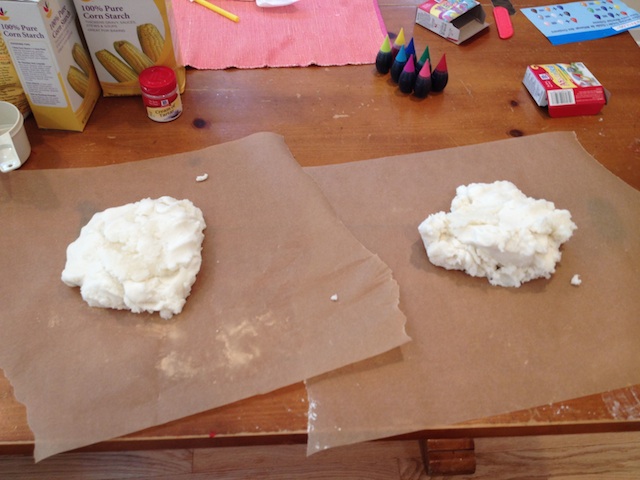
I separated it into two pieces so we could make two colors. (With this amount of dough, we probably could have made a bunch more colors if we’d wanted to, so keep that in mind if you’re trying to make a rainbow or something.)
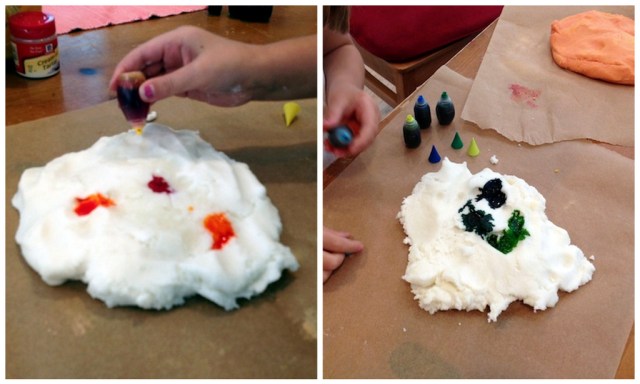
The small human dripped food coloring on and then we spent a good amount of time kneading them together to mix the colors. We made orange and blue/green.
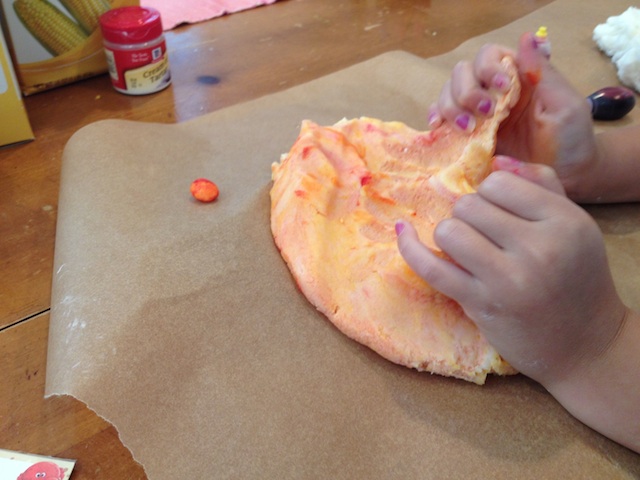
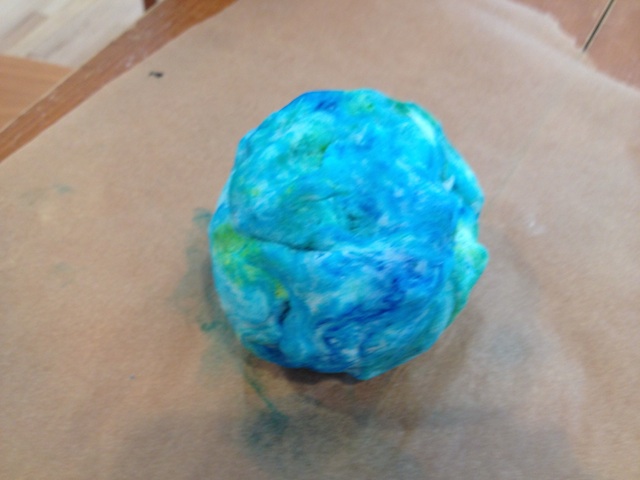
I made a pal…
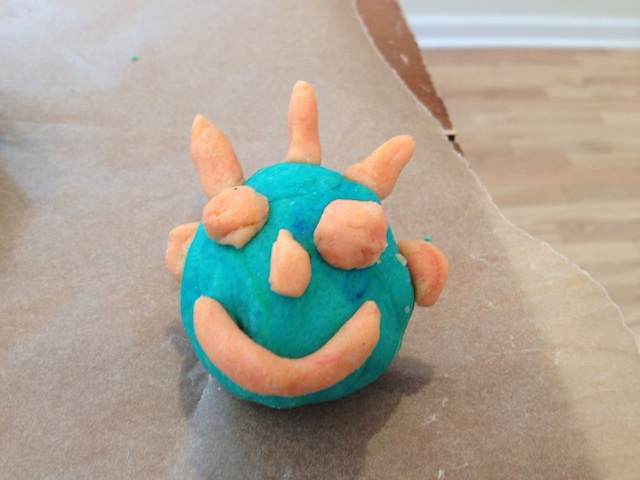
… and I tried to keep things on-brand…
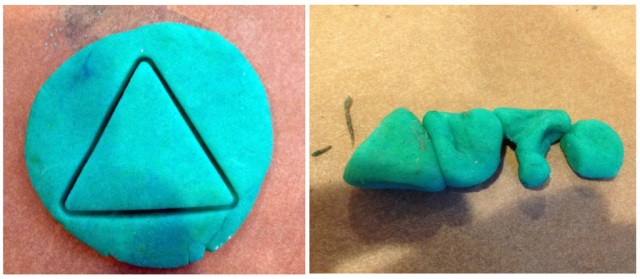
Then we introduced more food coloring into the equation. When it comes to playdough, you can really never go wrong with adding more food coloring into the equation.
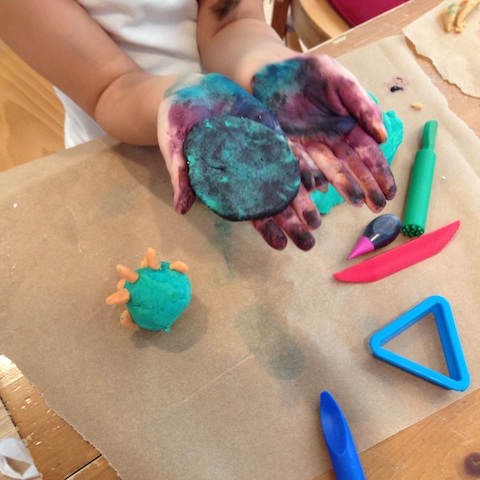
We made some pinch pots and dripped even more food coloring on them without kneading it in, and it made this interesting sheen that almost looked like glitter.
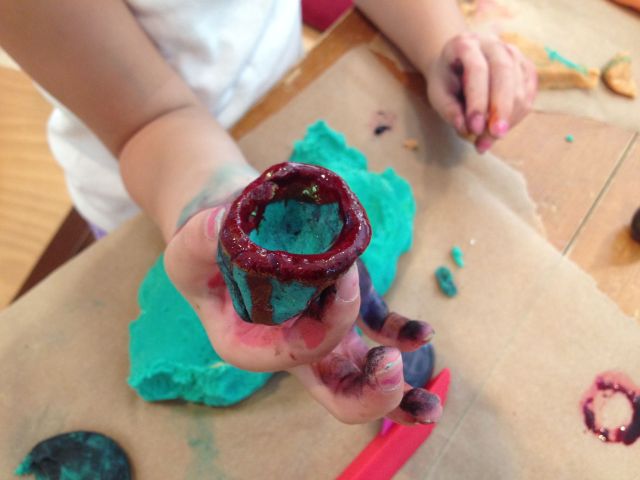
Probably we could bake these in the style of Hansen’s very adorable salt-dough ghosts.
G-free playdough day was a rousing success, and this can be zipped away in some ziplocks and reused for months.
It is important to note that this is not the easiest recipe for kids to take part in, because it involves dealing with hot water and mixing things while the stove is on. The kid I was doing this with helped me measure the dry ingredients. I mixed the wet and dry ingredients together in the pot, and once it was time, I had her drip food coloring onto the dough. Then I kneaded the color in until the dough was cool enough to for her to take over. It was a little complicated, but it worked for us, especially when she helped with the food coloring process. She was really excited to be able to use the food coloring however she wanted to. Her hands got covered in it, but it’s nothing that doesn’t wash away.
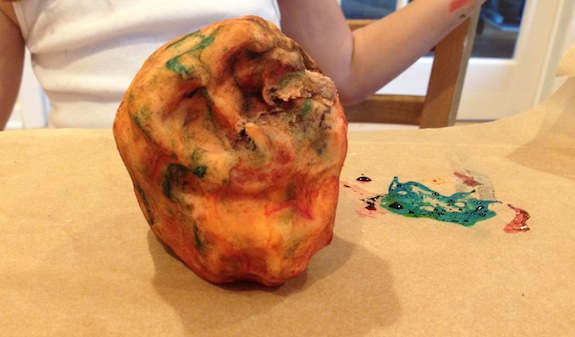
You know what they say — food coloring and rice flour are the key ingredients to a gluten-free good time.



Thanks for the recipe! And thank you for mentioning that celiac kids (and celiac adults) need gluten free playdough to be safe!
I’m a celiac adult that needs to do this soon!
Gluten-free playdough where have you been all my life. (Many thanks for the recipe–I as well have celiac and appreciate such substitutions.)
Please. What is celiac? Thanks.
Celiac is a genetic disease which causes the immune system of the person who has it to target particles containing gluten (wheat, barley, and rye) as foreign. Because the immune system doesn’t recognize the particles, the body doesn’t digest them, and it leads to all sorts of nasty complications like diarrhea and malnutrition and, back in the old days, fatalities. Currently there is no cure for celiac disease so people who have it must go completely gluten-free, so recipes like this are very helpful.